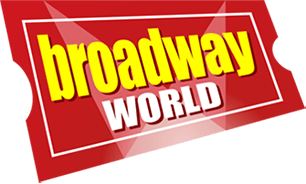SOUND QUALITY OF SHOW CD's
#0SOUND QUALITY OF SHOW CD's
Posted: 2/10/06 at 3:04am
I have read in several other threads complaints about sound quality of pre-digital Cd's.
The key cast album labels have always had differing sounds. Decca's shows were recorded very flat witha brittle soud that can be quite unflattering to the female voices. Columbia's cast albums havd a rich full bodied soun. RCA Victor's mon cast albums sound flat and boxy, while their 1960s "Living Stereo" sound more open but tend to have a good deal of distortion. Capitol's discs are very reverberent without much bottom end.
From about 1970 forward stereo cast albums were recorded on multitrack tape and the sound quality improved greatly. RCA's SWEENEY TODD and PORGY AND BESS albums are vividly theatrical with good use of sound effects.
With the dawn of the digital era I have noticed a change in recorded sound: singers eeme much more closely mic'd so the singers do not sound like they are up on stage but just inside your head (if you listen on headphones.)
IS this teh sound a lt of you prefer?
Because I like the open spaceous sound of the pre-digital era better!
I think cast albums of Columbia and RCA in the 1970s sound just fine. In fact Columbia's even going back to the 1950s high fidelity series sound great. Liste to KISMET or the original MY FAIR LADY.
Cast albums are NOT "soundtracks."
Live theatre does not use a "soundtrack." If it did, it wouldn't be live theatre!
I host a weekly one-hour radio program featuring cast album selections as well as songs by cabaret, jazz and theatre artists. The program, FRONT ROW CENTRE is heard Sundays 9 to 10 am and also Saturdays from 8 to 9 am (eastern times) on www.proudfm.com
#1re: SOUND QUALITY OF SHOW CD's
Posted: 2/10/06 at 4:46amThe Goddard Lieberson and early Thomas Shepard recordings for Columbia sound fantastic. I'd put them up against any digital recording produced today.
#2re: SOUND QUALITY OF SHOW CD's
Posted: 2/10/06 at 8:35amYou're absolutely right. Columbia recordings were miles above the competition. RCA had distortion, especially in the brass yet their releases seemed to vary. Capitol often had a strange reverb, moreso on record and you would actually here the next note BEFRORE it came up in a pre-echo effect....most annoying. Before the evolution of CD'S, reel to reel tapes were my preferred format. For sound purity I was always ecstatic when I would hear a musical I was looking forward to would be released on Columbia. The throwbacks and pluses on LP also turned up on the CD remastering. Columbia/SONY still being the very best.
#3re: SOUND QUALITY OF SHOW CD's
Posted: 2/10/06 at 9:55am
Since we're talking about sound and cast albums, I have a general complaint with MOST cast albums pre-late-'90s... I HATE the overuse of dynamic levels. I can't stand listening to an extremely quiet passage of music only to be blown out of my chair a few moments later. This is NOT a reflection of the way it was heard in any theatre, and it's WAY overdone. I have the same problem with most classical recordings. They're badly engineered and produced. There... I said it!
If I have to sit by the volume control and crank it up or down accordingly every 4 or 5 bars, I'm hardly enjoying the experience, and I'm really not listening to the music. It feels more like I'm playing a computer game with a joystick. I HATE IT.
Audio recordings are their own art form, and should be approached as such. They should make modifications in the extreme dynamics to fit their own medium, instead of trying to artificially capture the "over-hyped" acoustics of a live theatrical sound. They FAIL every time when they do that.
Recent recordings (in the past 5 years or so) have done a much better job with balancing. They've hired engineers and producers that finally understand how to record theatre music with much better results. And as good as Thomas Z. Shepard was, he just didn't "get it" either, as far as overall balance and levels. Dynamics variances are good, just don't make them so crazy over-the-top on an audio recording that it's practically unplayable without having one hand on the volume control at all times.
*end of rant*
blocked: logan2, Diamonds3, Hamilton22
#4re: SOUND QUALITY OF SHOW CD's
Posted: 2/11/06 at 3:43am
I too have noticed the variable levsls on some recordings (TITANIC is one that drives me nuts that way!) It seemed to be more aproblem with early CD reissues and early recordings made in DDD format. Some CD players even have automatic level controls to smooth this out.
Cast albums are NOT "soundtracks."
Live theatre does not use a "soundtrack." If it did, it wouldn't be live theatre!
I host a weekly one-hour radio program featuring cast album selections as well as songs by cabaret, jazz and theatre artists. The program, FRONT ROW CENTRE is heard Sundays 9 to 10 am and also Saturdays from 8 to 9 am (eastern times) on www.proudfm.com
#5re: SOUND QUALITY OF SHOW CD's
Posted: 2/11/06 at 4:04amMight be a silly question, but does Columbia put out cast recordings anymore? I know they are doing the Masterworks re-releases, but are they releasing anything original?
#6re: SOUND QUALITY OF SHOW CD's
Posted: 2/12/06 at 2:00am
Columbia was bought up by SONY in the late 1980s and last year it was merged with BMG Music - so while the labels may still exists the parent companies have changed.
SONY/BMG now owns all of the cast albums made by Columbia, RCA Victor.
Columbia as a label stopped recording cast albums in the early 1990s with THE GOODBYE GIRL. Sony did not record another BC until THE LIFE in 1997 (issued on the SONY CLASSICAL label, as have their recent cast albums like THE PRODUCERS and HAIRSPRAY.)
In 1993 SONY created the SONY BROADWAY label mainly to distribute reissus of Columbia cast albums. The label still exists in that most of the nearly 40 cast album reissues made under that imprint are still in print: ALL AMERICAN, DAMES AT SEA, DEAR WORLD, DO I HEAR A WALTZ etc. A few of these reisues have been deleted (MR PRESIDENT, GIRL WHO CAME TO SUPPER, OVER HERE!) SOONY BROADWAYnever recorded any new cast albums.
When the sales of many of the reissues did not meet expectations the division was closed down but a few years later, Sony created the SONY COLUMBIA BROADWAY MASTERWORDS label, which reissued the best-sellers that had been orignally on the Columbia label. Columbia is now the domain of Sony's pop cataogue. By moving most of the Broadway cast recordings to SONY BROADWAY or SONY COLUMBIA BROADWAY MASTERWORDS or even SONY CLASSICAL it put them under Sony's Classical division, which makes more sense. Some titles have appeared in all 3 series!
So, take the OCR of SOUND OF MUSIC:
1st release was on COLUMBIA records as a stereo LP KOS 2020.
In 1973 it was reissued as COLUMBIA S 32601
The first CD release was COLUMBIA CK 32601.
In 1993 it was re-issued as SONY BROADWAY SK 53537
and in 1998 as SONY COLUMBIA BROADWAY MASTERWORKS SK 60583.
Cast albums are NOT "soundtracks."
Live theatre does not use a "soundtrack." If it did, it wouldn't be live theatre!
I host a weekly one-hour radio program featuring cast album selections as well as songs by cabaret, jazz and theatre artists. The program, FRONT ROW CENTRE is heard Sundays 9 to 10 am and also Saturdays from 8 to 9 am (eastern times) on www.proudfm.com
Thesbijean
Broadway Legend Joined: 12/9/04
#7re: SOUND QUALITY OF SHOW CD's
Posted: 2/12/06 at 2:29amThe Music Industry is SO hard to follow because of companies buying out labels and whatnot, if someone were to make a chart with the evolution of it, I would happily pay money for it...
#8re: SOUND QUALITY OF SHOW CD's
Posted: 2/12/06 at 7:15am
Ok short history....
The Columbia Phonograph company was originally set up to service government and business in the District of Columbia. They later became the Columbia Gramophone Company until they went bankrupt and were bought up by American record Group in 1932. ARG's big label was Brunswick. In 1938 the company was bought by the Columbia Broadcasting System (CBS) and the Columbia label re-activated. In 1988 SONY Corp. bought CBS records, and in 2004 Sony merged with BMG.
COLUMBIA cast albums: SHOW BOAT (1946 revival), FINIAN'S RAINBOW, KISS ME KATE, SOUTH PACIFIC, PAJAMA GAME, MY FAIR LADY, MOST HAPPY FELLA, CANDIDE, BELLS ARE RINGING, WEST SIDE STORY, FLOWER DRUM SONG, GYPSY, SOUND OF MUSIC, CAMELOT, BYE BYE BIRDIE, MAME, CABARET, 1776, COMPANY, A LITTLE NIGHT MUSIC, A CHORUS LINE (plus many many more.)
Consolidated Talking Machine Company, created in 1899 became the Victor Talking Machine Company in 1901(after being the victor of a protracted court case.) In 1929 the Radio Corporation of America bought Victr Talking Machine Company (RCA also owed the National Broadcasting Company- NBC radio) Hence RCA Victor. (They had a budget label RCA Bluebird and later RCA Camden - named for their production company based in Camden NJ) GE bought NBC and RCA in 1988 and then sold off the record label to Bertelsman Music Group of German (BMG) The new company kept the RCA Victor label for cast albums until it was dismantled in 2002.
RCA cast albums: BANDWAGON (1931 - experimental Lp); BRIGADOON, ALLEGRO, HIGH BUTTON SHOES, CALL ME MADAM, PETER PAN, DAMN YANKEES!, JAMAICA, OLIVER!, HELLO DOLLY, FIDDLER ON THE ROOF, HAIR, PACIFIC OVERTURES, SWEENEY TODD, 42ND STREET, LA CAGE AU FOLLES, SUNDAY IN THE PARK, INTO THE WOODS, ANYTHING GOES (1987 revival), ASSASSINS, KISS OF THE SPIDER WOMAN, TITANIC, many many more.
In 2004 Sony and BMG merged so all these recordings are under one parent company.
DECCA. Originally a British label, an American company was set in 1934 by Jack Kapp (formerly of Brunswick) who signed Bing Crosby right away. In 1943 Kapp recorded the album of OKLAHOMA! and while not the first OCR, it was the one that sold millions and established the process. Decca dropped out of the cast album
field in the 1950s but kept their older titles in print. In 1973 MCA bought up Decca (and thus reissued all the old Decca cast albums on the MCA label.) MCA was owned by Universal Music Group, a division of Universal studios. Meanwhile, London Records was set up in the USA to distribute British Decca recordings here. Eventually London/English Decca, along with Philips, DGG and other Classical labels were bought by Polydor which morphed into Polygram and then in 1998 was bought by Universal Music Group. They re-launched Decca as Decca Broadway recording new shows (WICKED, SPAMALOT) and reissuing all their older ones.
DECCA cast albums: OKLAHOMA!, CAROUSEL, ANNIE GET YOUR GUN, GUYS AND DOLLS, KING AND I , WONDERFUL TOWN.
EMI (for Electrical & Musical Industries) originated in England and stretches back to around 1888. Their main label was Columbia and they had ties with U.S> Columbia =until the 1950s when UP.S. joined with the U.K. Philips label. In 1942 the American label Capitol was born and they established a tie with EMI (became Capitol-EMI in later years.) Their Classical label was Angel. Capitol abandoned the cast album field after their poorly received LP of FOLLIES in 1971. Although they issued some CD reissues under the Capitol Banner, in 1992 the classical division set up BROADWAY ANGEL to reissue almost all the Capitol cast albums in a series of 40 CD releases. (Most of these are now out of print, but many have been reissued by DRG.)
EMI Cast albums: ST LOUIS WOMAN, FLAHOOLEY, CAN-CAN, PLAIN & FANCY, MUSIC MAN, GAY LIFE, SAIL AWAY, FUNNY GIRL, FOLLIES, more.
Cast albums are NOT "soundtracks."
Live theatre does not use a "soundtrack." If it did, it wouldn't be live theatre!
I host a weekly one-hour radio program featuring cast album selections as well as songs by cabaret, jazz and theatre artists. The program, FRONT ROW CENTRE is heard Sundays 9 to 10 am and also Saturdays from 8 to 9 am (eastern times) on www.proudfm.com
Videos





